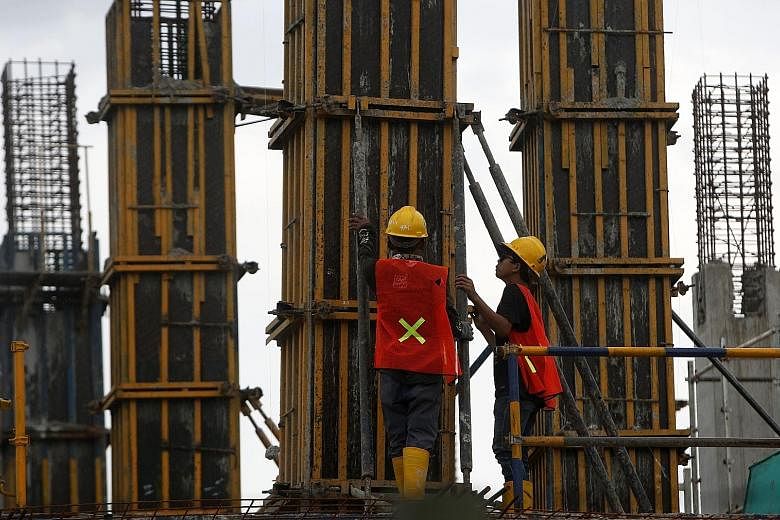Economies around the region are likely to hold up reasonably well this year despite concerns over slowing global growth and the uncertainties of a Trump administration, said United Overseas Bank yesterday.
It noted that the 10 Asean economies have become less reliant on trade with the West while member countries also have "fiscal levers" to pull if necessary.
Mr Jimmy Koh, head of research and investor relations, told a briefing: "Whether you look at it from a corporate sector, or from the individual, banking and sovereign (sectors)... they have undergone a lot of structural changes since 1998 that created resilience."
He said Asean economies have become more integrated since the formation of the Asean Economic Community in 2015 and have been less dependent on trade with the United States and Europe.
UOB said Singapore, for example, shipped 14.5 per cent of its exports to the European Union in 2005 but this dropped to 8.9 per cent in 2015. Similarly, 9.8 per cent of exports from here went to the US in 2005, compared with 7.7 per cent in 2015. By contrast, shipments to Asean nations, mainland China and Hong Kong have risen over the same period.
"We see economic gravity shifting from the West to the East. We saw the rise in the middle income, the rise in intra-regional trade. All these bode well for the region," Mr Koh said.
Infrastructure spending as well as growing affluence across the region would help spur growth over the next five to 10 years, he added.
China's One Belt, One Road initiative is expected to boost infrastructure investment and could help spark further trade and development in the region.
UOB's assessment is based on the assumption that US President-elect Donald Trump adopts a more "moderate" approach to policy implementation than flagged in his campaign rhetoric after he takes office next week. While campaigning last year, Mr Trump took aim at free trade, slamming the Trans-Pacific Partnership and threatening to impose tariffs on imports from China and Mexico.
Mr Trump's anti-trade rhetoric, political developments in Europe and slower growth in China are seen as key risks for the region in the next 12 months.
A check with several economists revealed broadly similar views on the better prospects in Asean this year. "We expect growth in Vietnam and Philippines to remain strong, Thailand and Indonesia to do better than 2016 and Singapore and Malaysia to moderate against 2016," noted head of Asean economic research at Standard Chartered Edward Lee.
He added that growth of the so-called Asean-6 could come in at about 4.8 per cent this year, just above the 4.7 per cent last year. Stanchart defines the Asean-6 as Indonesia, Malaysia, the Philippines, Singapore, Thailand and Vietnam.
Meanwhile, OCBC Bank economist Selena Ling picks the Philippines, Indonesia, Myanmar, Laos, Vietnam and Cambodia as bright spots in the region.
"As domestic labour markets and private consumption remain relatively healthy, albeit also slowing, consumer electronics and even healthcare and education services may also enjoy robust demand due to the ageing population," she said.
However, a looming concern is the potential disruption to capital flows amid rising interest rates and the appreciation of the greenback.
"The likelihood of a stronger US dollar - and weakening Asian currencies - could also result in a tightening of financial conditions, as the supply and cost of foreign funding increases," noted Ms Lim Su Sian, Asean economist at HSBC.
Singapore's growth this year is expected to be "range bound", growing at 1 to 2 per cent, Ms Ling estimates. The Republic will unveil the report from the Committee on the Future Economy in the next few weeks with strategies laid out to keep the country competitive.
"A challenge for Singapore is, how do we embrace the changes in the digital world; and for the corporates and SMEs, how can they better engage the millennials, who will be the consumers and workforce of the future," Mr Koh added.


